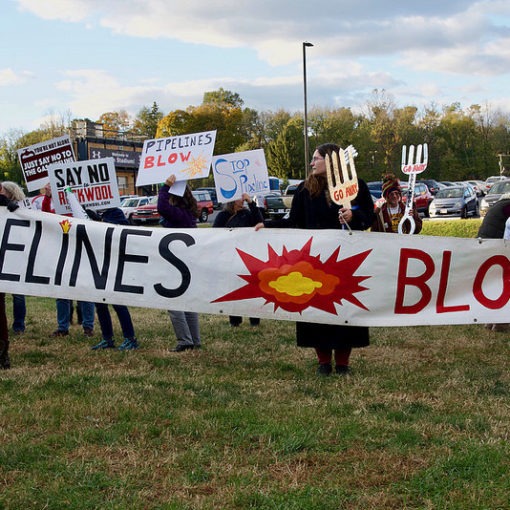
Against all odds, the Standing Rock Sioux have prevailed in stopping the Dakota Access Pipeline at Lake Oahe. On Sunday, the U.S. Army Corps of Engineers denied–for the time being–the easement which would have given Energy Transfer Partners permission to build the final segment of the project under the Missouri River.
Occupants of the Oceti Sakowin camp erupted in joy and celebration at the announcement.
“We will not fight tonight, we will dance,” said Rami Bald Eagle, Cheyenne River Lakota Tribal Leader, when he received the news.
The Standing Rock Sioux released a statement of thanks to Water Protectors and allies who had taken part in the standoff: “Today, the U.S. Army Corps of Engineers announced that it will not be granting the easement to cross Lake Oahe for the proposed Dakota Access Pipeline. Instead, the Corps will be undertaking an environmental impact statement to look at possible alternative routes. We wholeheartedly support the decision of the administration and commend with the utmost gratitude the courage it took on the part of President Obama, the Army Corps, the Department of Justice and the Department of the Interior to take steps to correct the course of history and to do the right thing.”
Jo-Ellen Darcy, Army’s Assistant Secretary for Civil Works, issued the announcement. “Although we have had continuing discussion and exchanges of new information with the Standing Rock Sioux and Dakota Access, it’s clear that there’s more work to do,” she said. The ACE will explore “alternatives” to the pipeline crossing.
The ACE statement came as thousands of U.S. veterans had been arriving by car all day Sunday, adding to the existing thousands already at four camps who have opposed the project since April.
The group of at least 2,000 veterans had mobilized in response to a violent attack on Water Protectors by Morton County police on November 20. They came to form a buffer between Morton County police and Water Protectors. Over 300 had been injured, including shootings with rubber bullets and water cannons. On that night, over 26 were shot with projectiles thought to be rubber bullets. An activist lost use of her arm from what is thought to be a concussion grenade.

The Army Corps decision is not final but will probably lead to an analysis for a formal Environment Impact Statement, long sought by the tribes, which could take months to complete.
It’s unclear how the transition to the Trump administration will ultimately affect the Dakota Access Pipeline’s route.
“We don’t know what the next administration is going to do, but at least if we get an Environmental Impact Statement process in place that will delay this for months,” Dallas Goldtooth of the Indigenous Environmental Network said in a video posted on Facebook.
Gail Small, a Native American Studies professor at Montana State University, told Inforum that presidential power is constrained by federal agencies such the Army Corps, which have broad discretion in making regulatory decisions such as easements.
Energy Transfer Partners can also appeal the decision. While any scenario will push the pipeline’s in-service date long past January 1, whether the pipeline will be re-routed, or stopped entirely, is up in the air.
Goldtooth thanked the Water Protectors and allies for their hard work fighting the Dakota Access project and asked them to continue supporting those everywhere trying to keep fossil fuels in the ground. “Thank you so much for this moment,” he said.





